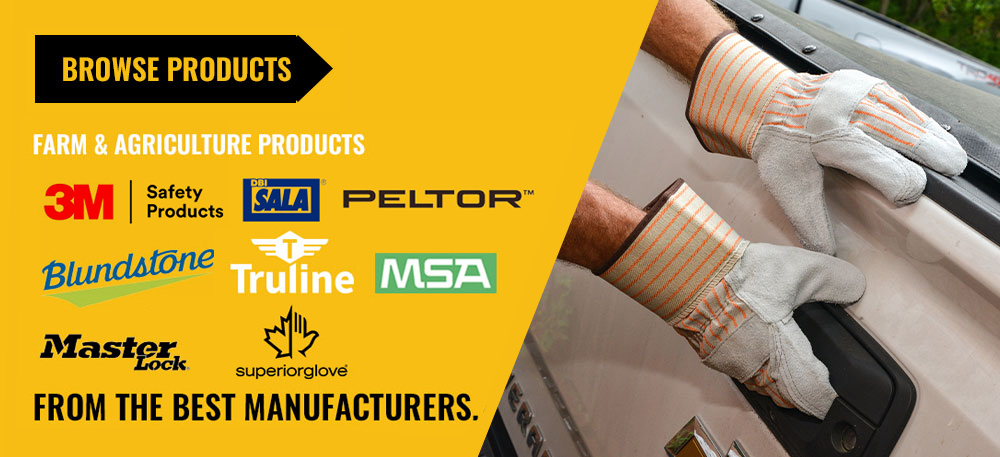Agriculture

Hazards in Agriculture
DID YOU KNOW: Farm-related accidents and injuries are affecting younger workers? According to OSHA, each year more than 2 million youth under the age of 20 are exposed to farm-related safety hazards that can cause fatalities, injuries or permanent disability.
The 2019 data for the U.S. Bureau of Labor Statistics indicates that the agricultural sector is still the most dangerous in America with 573 fatalities, or an equivalent of 23.2 deaths per 100,000 workers with 167 from contact with an object or equipment.
Recognizing common hazards and providing proper training and education can create a safer workplace.
CONTINUE READING IN THE ARBILL.COM BLOG >
DID YOU KNOW: Under the Clean Water Act there is a permit that sets requirements for any point source discharge into US waters, i.e. from a pipe, ditch, canal, etc. Under the National Pollutant Discharge Elimination System, runoff from livestock/animal feeding areas would be considered a point source, but stormwater discharges from agricultural irrigation would not be. Keep in mind, there also may be additional permitting on state and local levels.

 The best safety equipment from top manufacturers in the industry is found at Arbill.com.
The best safety equipment from top manufacturers in the industry is found at Arbill.com.EXCLUSIVE PRICING
Sign up for our Farming & Agriculture Program to receive EXCLUSIVE PRICING on protective equipment at Arbill.com.

Whatever your industry, Arbill is committed to helping your company ensure workplace safety and lower your regulatory compliance costs with a full suite of consulting options, including site assessments and audits, gap analysis, staff augmentation and industrial hygiene services. All services are provided by highly experienced and certified EHS professionals.

When repairing or maintaining farm equipment, make shop safety a top priority. Consider the following best practices:
2. HAZARDOUS CHEMICALS: Properly label, secure, store and handle chemicals – keeping them away from heat sources and place active/tested fire extinguishers in locations that make them easily accessible.
3. PPE: Wear proper PPE and inspect it before use to ensure it is free from defects.
4. CLEAN / CLEAR WORKSPACE: Keep your workplace clear of hazards, regularly and properly clean up any spills and always practice good hygiene by washing hands with soap and water.

Lockout / Tagout—
The Key to Controlling Hazardous Energy
Did you know: Lockout / Tagout provides worker protection by following a process to mechanically lock a device to prevent the energization of a machine or piece of equipment and that the most overlooked hazardous energy is GRAVITY?
Although farms are exempted from OSHA’s Lockout / Tagout standard for general industry (29 CFR 1910.147), it is important to understand why developing a set of LOTO practices can result in a safer workplace.
CONTINUE READING IN THE ARBILL.COM BLOG >

Fall Protection
Understanding your working conditions and knowing the benefits of Fall Protection including the difference between a Self-Retracting Lifeline vs. Lanyards can save your life.
In the event of a fall - self-retracting lifelines – can vary in length and will only activate during a fall and use an internal braking mechanism designed to stop you mid-fall.
Lanyards generally have a set length of 6’ and unlike a SRL will allow a worker to ‘fall’ for the length of the lanyard until there is no slack left.
CONTINUE READING IN THE ARBILL.COM BLOG >
Join the Arbill Farming & Agriculture Program to Receive YOUR Special Pricing!
Have a question regarding Arbill's Farming & Agriculture Program? Contact Arbill today!
CONTACT US
CUSTOMER SERVICE
CONTACT US



 Hand Protection
Hand Protection









